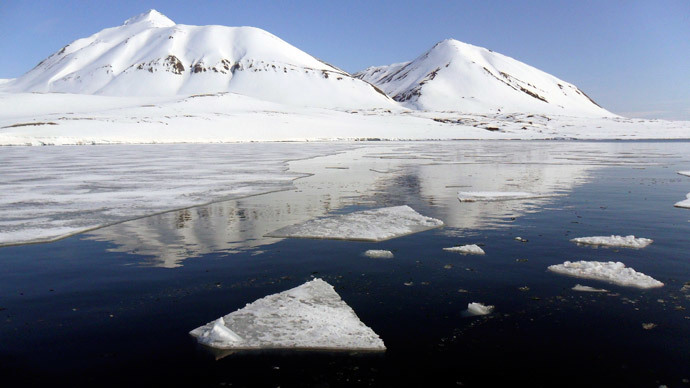Melting of Antarctic ice sheet and 3-meter sea level rise inevitable - study

Massive regions of the ice sheet that makes up West Antarctica have begun collapsing in a process that scientists have worried about for decades and fear is likely unstoppable.
Researchers warned that the accelerated pace of disintegration is expected to remain relatively slow over the next 100 years, although after that point it will speed up so fast that it could become a major issue for seaside cities. Ocean levels could rise by at least three meters, according to two papers scheduled for publication this week in the Science and Geophysical Research Letters.
“This is really happening,” Thomas P. Wagner, chief of the NASA program on polar ice, told the New York Times Monday. “There’s nothing to stop it now. But you are still limited by the physics of how fast the ice can flow.”
The authors of both papers conclude that the cause of the melting is warm water swelling up from the depths of the ocean and warming the ice sheet from below. The disintegration is not being caused by slowly-warming air temperatures, although intensifying winds are contributing to the problems by pushing the warm water through West Antarctica.
Scientists believe the winds have been made stronger, and thus more damaging, by global warming. The problem is worsened by West Antarctica’s location, as the ice sheet sits level in a bowl-shaped depression in the earth.
The dire forecast confirmed Monday was first predicted by Ohio State University glaciologist John H. Mercer in 1978. Mercer, according to the Times’ Justin Gillis and Kenneth Chang, warned that the ice located at the edge of the bowl will melt then move into deeper water, creating more instability.
Even if the melting were to suddenly stop and revert to earlier levels, Ian Joughlin, University of Washington glaciologist and lead author of a paper in Science, said it would still be “too little, too late to stabilize the ice sheet…There’s no stabilization mechanism.”
Climate change is one topic the normally contentious scientific community agrees upon almost universally. Dating back to Mercer’s initial prediction in 1978, studies have consistently indicated that human influence on the Antarctic ice is imminent.
“The scarcity of the observations in the Antarctic makes it harder to identify and attribute temperature trends, but it does not make it impossible,” climatologist Nathan Gillett of Environment Canada told the science journal Nature in 2008. “Warming in both polar regions has many potential impacts – for example on ice-sheet melting, sea level and on polar ecosystems.”
The abstract of a study published in Nature Geoscience four years later, in December 2012, was less circumspect.
“There is clear evidence that the West Antarctic ice sheet is contributing to sea-level rise,” the authors wrote. “We confirm previous reports of West Antarctic warming, in annual average and in austral spring and winter, but find substantially larger temperature increases.
“In contrast to previous studies, we report statistically significant warming during austral summer, particularly in December-January, the peak of the melting season. A continued rise in summer temperatures could lead to more frequent and extensive periods of surface melting of the West Antarctic ice sheet.”
While the studies slated for publication this week estimated that the problem won’t become more severe for another 100 years, previous scientists have been less generous. A 2013 study published in the Proceedings of the National Academy of Sciences warned that without a drastic curb in greenhouse gas emissions at least 80 US cities and towns could be at least partly underwater by 2100.














